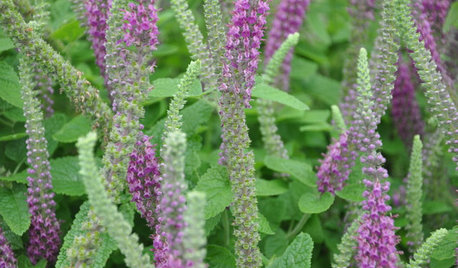garlic mustard and ? knotweed ? good/bad idea to...
offplumb
17 years ago
Related Stories

GARDENING AND LANDSCAPINGBid Bad Garden Bugs Goodbye and Usher In the Good
Give ants their marching orders and send mosquitoes moseying, while creating a garden that draws pollinators and helpful eaters
Full Story
GARDENING GUIDESDo You Have This Invasive Plant in Your Yard?
Garlic mustard is spreading across the U.S. Here’s how to spot it and what to do
Full Story
GARDENING AND LANDSCAPING4 Good Ways to Get Rid of Mosquitos in Your Yard
Stay safe from West Nile virus and put an end to irksome itches with these tools and methods for a porch, patio or yard
Full Story
KITCHEN DESIGNKitchen Layouts: A Vote for the Good Old Galley
Less popular now, the galley kitchen is still a great layout for cooking
Full Story
REMODELING GUIDES10 Things to Consider When Creating an Open Floor Plan
A pro offers advice for designing a space that will be comfortable and functional
Full Story
DECORATING GUIDES6 Decorating Duos to Consider Now
Mustard, brushed brass, geometrics and more: Learn how to mix and match this year’s design trends like a pro
Full Story
GARDENING GUIDESGet on a Composting Kick (Hello, Free Fertilizer!)
Quit shelling out for pricey substitutes that aren’t even as good. Here’s how to give your soil the best while lightening your trash load
Full Story
FEEL-GOOD HOME9 Smells You Actually Want in Your Home
Boost memory, enhance sleep, lower anxiety ... these scents do way more than just smell good
Full Story
FEEL-GOOD HOME21 Ways to Waste Less at Home
Whether it's herbs rotting in the fridge or clothes that never get worn, most of us waste too much. Here are ways to make a change
Full StoryMore Discussions








lisa03
ladyslppr
Related Professionals
Forest Park Landscape Architects & Landscape Designers · Horsham Landscape Architects & Landscape Designers · Mitchellville Landscape Architects & Landscape Designers · Aberdeen Landscape Contractors · Cary Landscape Contractors · East Chicago Landscape Contractors · Hurricane Landscape Contractors · Ronkonkoma Landscape Contractors · Severna Park Landscape Contractors · Seymour Landscape Contractors · Waterford Landscape Contractors · Pasadena Fence Contractors · West Columbia Fence Contractors · Greenville Siding & Exteriors · Orange County Siding & Exteriorsdavidl_ny5
offplumbOriginal Author
greenthumbannie
leslies
bob64
nywoodsman
bhrost
nywoodsman
bhrost
lisa03
nywoodsman
lisa03
bhrost
lisa03
jclark42
paulaj
bhrost
ahughes798
axeman
nywoodsman
freiamaya
naturesurrounds
twistfix